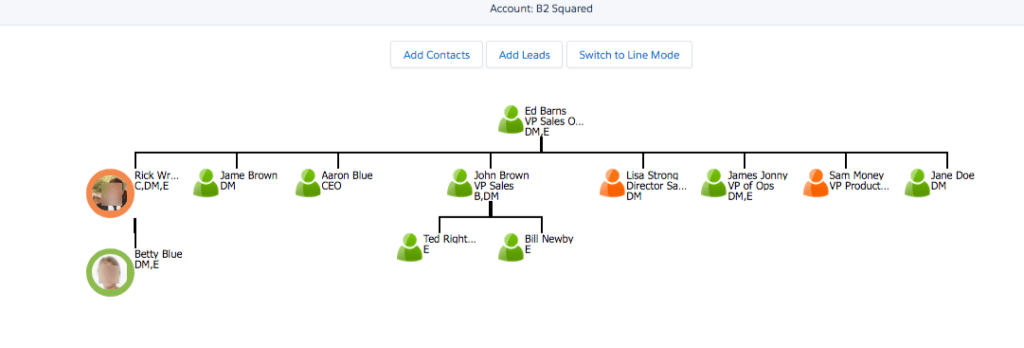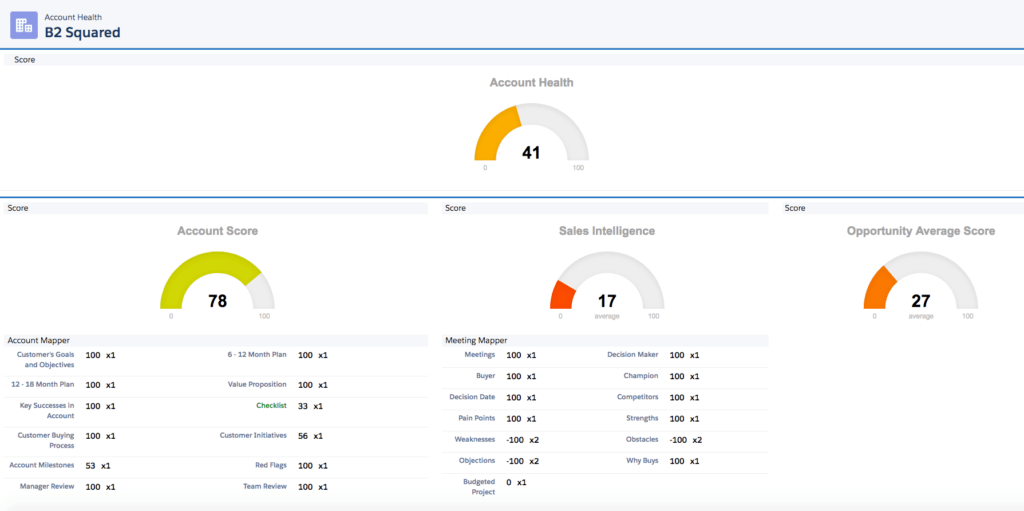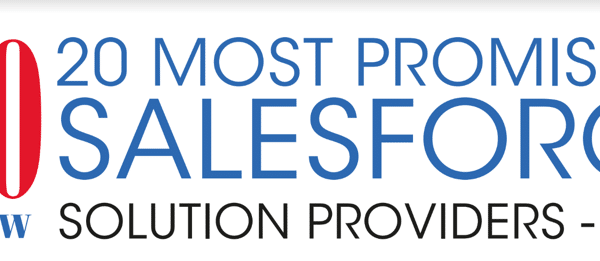- Account teams gain relevant and actionable sales and business intelligence regarding the accounts to drive the relationships and revenue.
- Provide sales leadership a keen insight into the account’s current and future plans and how to align solutions or products to the accounts.
- Ensures during account transition there is no loss in momentum to deny competitors gaining a foothold during transition.
- Provides the entire organization, sales and business intelligence that can be leveraged by marketing and product management to uncover trends for future marketing and development efforts.
Strategic Account Plan
Let’s dissect a strategy account plan to see the composition and all the parts and pieces that make up a healthy plan.
Customer’s Goal and Objectives
It’s imperative to know and understand the customer’s short term and long-term goals and objectives. This ensures your overall account plan is in sync and aligns with the customer.
Objectives
A standardized list of objectives for the account, what must be accomplish to drive customer success and revenue. Also, being able to track each one based on a colored-codes system and provide coaching advice for each objective.
Customer’s Buying Process
I had a manger that would always ask me, “How does the customer buy what we are selling them, what is their process?” If, I couldn’t answer he would say, “Then how are you going to sale to them?”. Knowing the customer’s buying process and who at the customer is responsible for each process is critical for success. All you have to do is ask the customer they will share their process with you.
 Customer Initiatives (White Space / Green Field)
Customer Initiatives (White Space / Green Field)
Mapping customer initiatives back to your products or solutions, ensure you will have a healthy pipeline. Not only do you need to know their initiatives but also what products or solutions are you going to propose, time-frame, customer contact and potential revenue. You can consider customer initiatives as “pre-pipeline”. It’s more qualified than a lead but not quit an opportunity yet. This also a great way to stay in front of your competition.
Account Milestones
Milestones allow you to track key “To-Does” within an account. Not only identifying them but also assigning them if necessary to other team members. For example: Schedule a Roadmap discussion with the customer. It’s likely that only product managers can give a road-map presentation to a customer. Milestones allow you to task (inform) the product manager of an upcoming presentation.
Red Flags
Red flags are potential “Gotachs” in an account. Not only identifying the Red Flag but also creating a mitigation plan for each.
SWOT Analysis
Based on real-time sales intelligence a SWOT Analysis it one of the most important pieces of the account plan. It provides a clear view of your strengths, weaknesses, obstacles, objections, red flags and opportunities in the account.
 Organizational Map
Organizational Map
It’s key to understand the organizational make-up of your accounts. Not only the reporting structure but the Stance (opinion) and Role of each contact based on the last interaction you or your team had with them.
Deliverable from the Plan
Some of the deliverables from an account plan are Account Health (Score), Action Plan and Playbook.
Account Health (Score)
A reliable health (score) account must be derived from the following:
- The Account Score – this score is the health of your plan itself, what has been completed and what must be completed.
- Sales Intelligence – this score is our knowledge of the customer (sales intelligence) based on the meetings you and your teams are having with them.
- Opportunity Score – this is the average opportunity score, are they winnable?
Action Plan
An Action Plan must include the following: what must to be accomplished, based on your plan. It does not include what has been accomplished or completed. In addition, key players (stance and role) are included. This is a very short and to the point document.
Playbook
The playbook is the entire plan in a PDF or other readable format. Playbooks are great for in-depth account reviews with your team or management.
Closing
Using the template discussed in this article you will be able to do the following:
- Gain relevant and actionable sales and business intelligence regarding the accounts to drive the relationships and revenue.
- Provide sales leadership a keen insight into the account’s current and future plans and how to align solutions or products to the accounts.
- Ensure during account transition there is no loss in momentum to deny competitors gaining a foothold during transition.
- Provide the entire organization, sales and business intelligence that can be leveraged by marketing and product management to uncover trends for future marketing and development efforts.


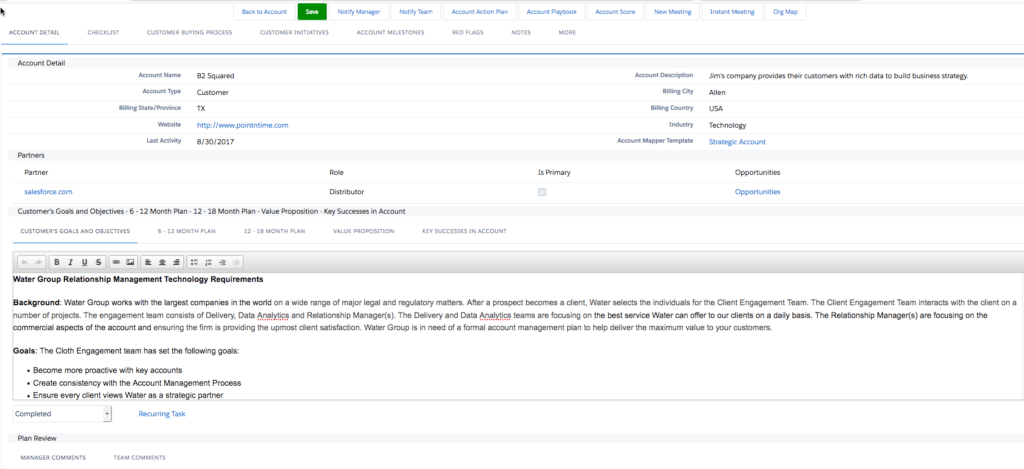
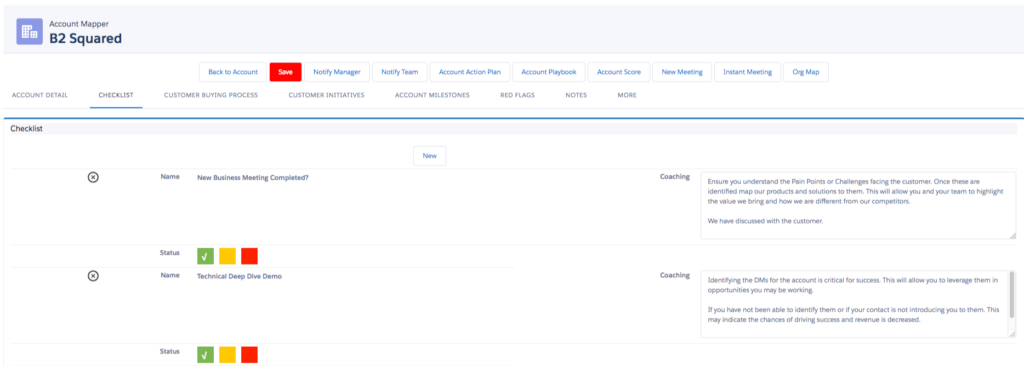
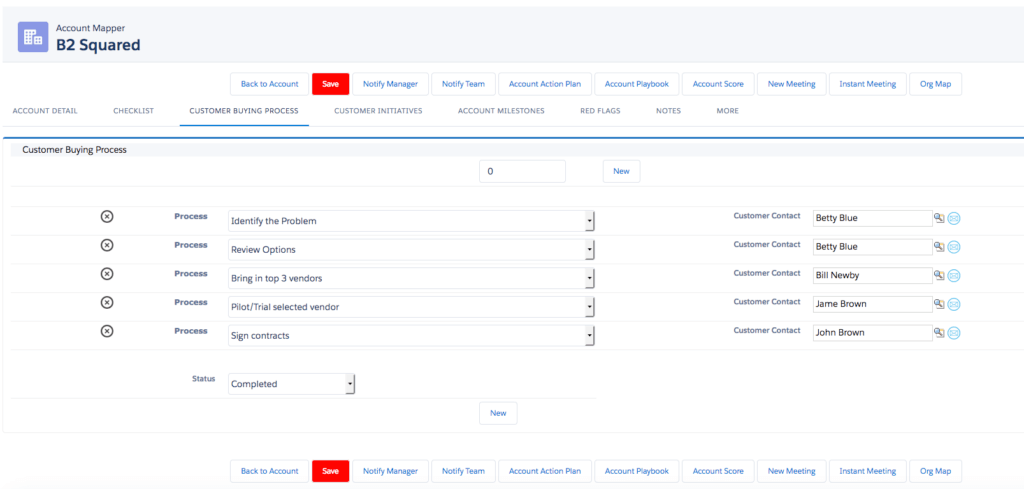 Customer Initiatives (White Space / Green Field)
Customer Initiatives (White Space / Green Field)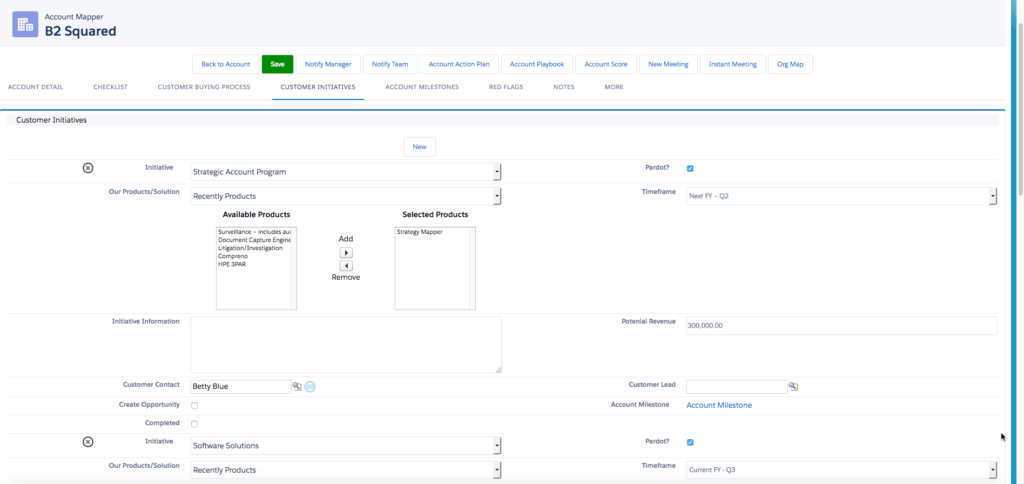
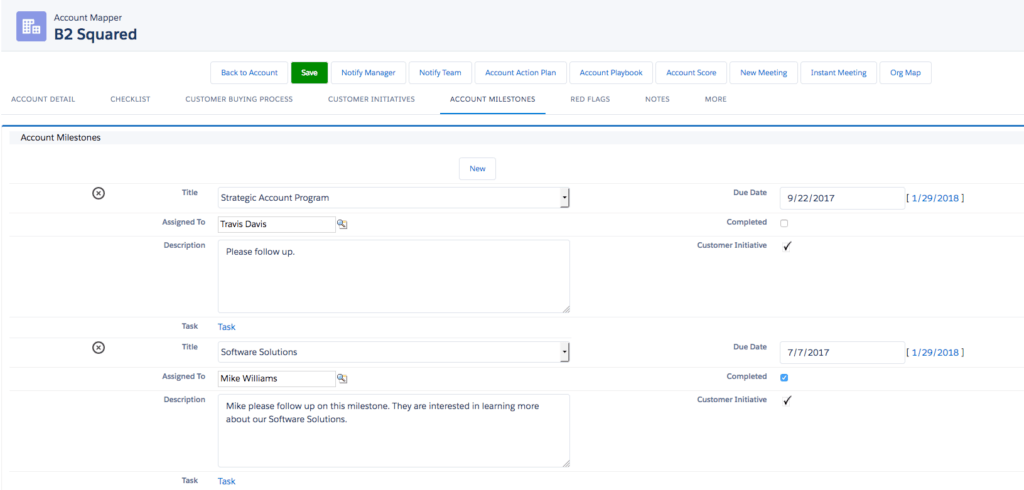
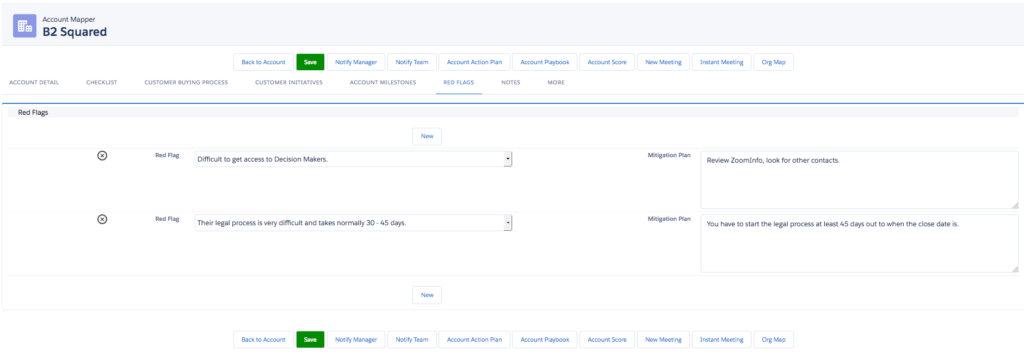
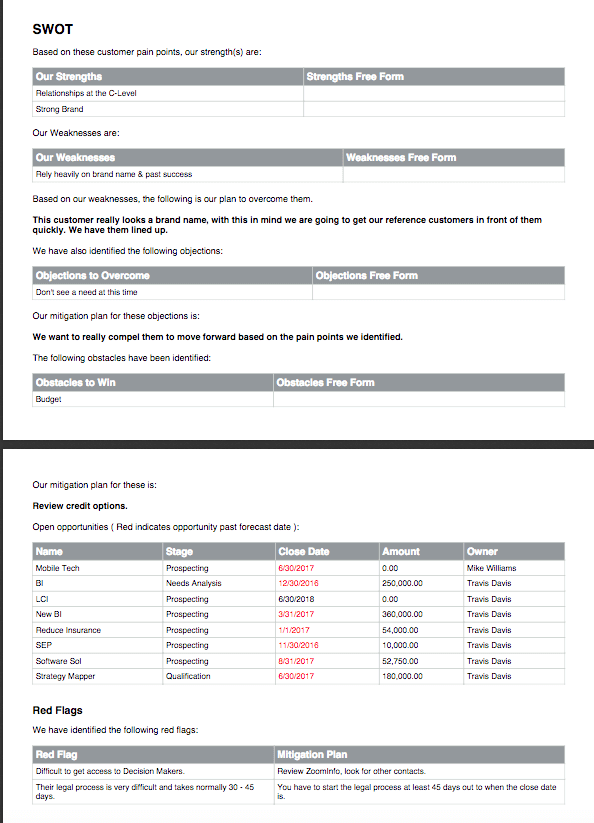 Organizational Map
Organizational Map